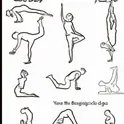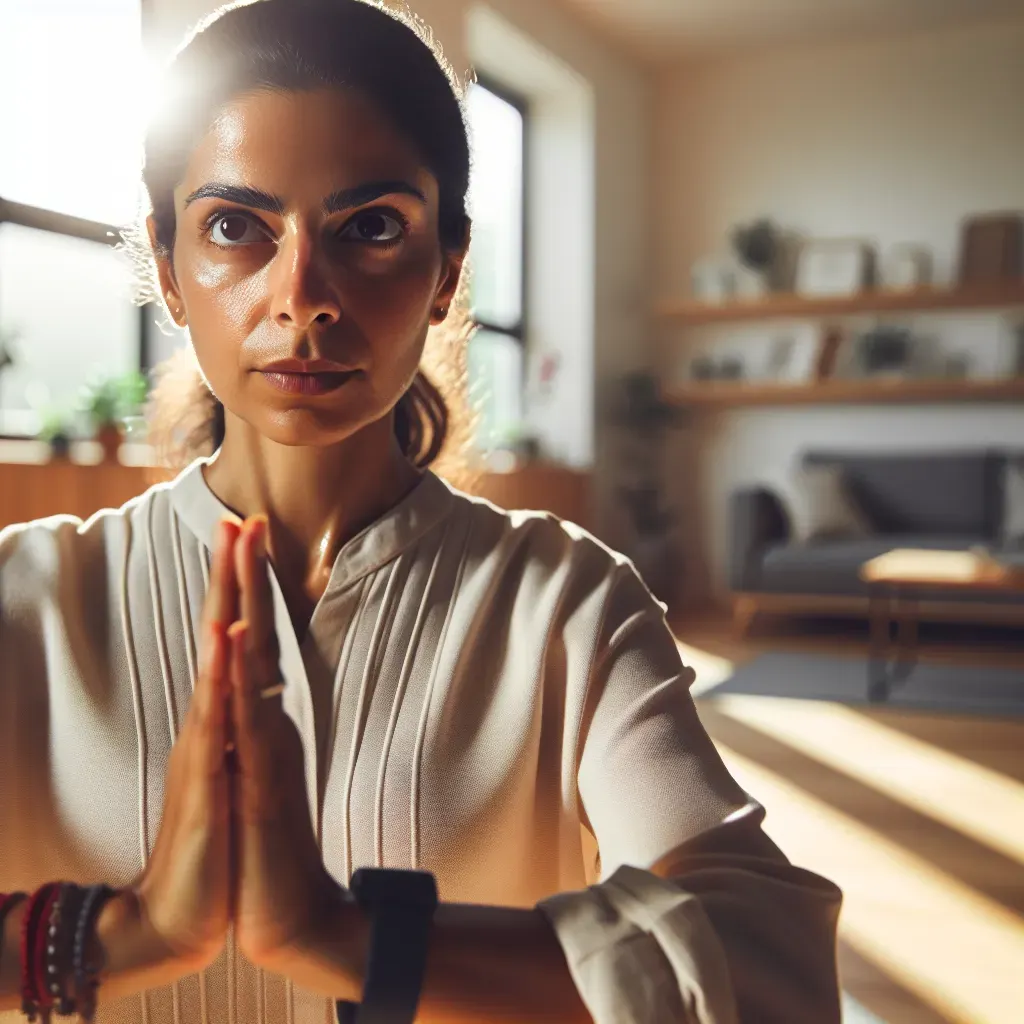Yoga Asanas for Beginners: The Complete Step-by-Step Starter Guide
Introduction to Yoga Asanas for Beginners
Starting a wellness journey through yoga asanas for beginners is one of the most rewarding decisions you can make. Yoga is gentle, accessible, and incredibly transformative, no matter your age, strength, or flexibility.
For many new practitioners, the biggest barrier is simply knowing where to start. With countless poses available, it can feel overwhelming. That’s why beginning with a guided approach is essential.
When you focus on foundational movements, you build strength, awareness, and breath control, all vital components of a safe and enjoyable practice. Beginners often notice improved posture, reduced stress, and increased energy within just a few weeks. These benefits compound quickly when you learn the right techniques from the start.
Yoga also teaches mindfulness, helping you stay grounded in the present moment. As you move through gentle stretches and steady breathing, you learn to listen to your body. This self-awareness becomes a powerful tool that extends far beyond your mat, influencing your daily habits, mood, and productivity.
Whether you're practicing at home or planning to join a studio, this guide covers everything you need. From core poses to detailed instructions, breathing techniques, and tips for consistency, you’ll feel confident beginning your yoga journey.
Benefits of Practicing Yoga Asanas for Beginners
Understanding the advantages of yoga helps beginners stay motivated and consistent. Many newcomers expect physical improvements, but the benefits extend deeply into mental and emotional well-being as well.
First, yoga builds foundational strength, especially in your core, back, and legs. These muscles support your posture and help prevent daily aches or fatigue. Unlike intense gym workouts, yoga relies on steady, controlled movements that reduce pressure on your joints, making it ideal for beginners or individuals with limited mobility.
Second, yoga significantly improves flexibility. Even if you currently feel “stiff,” gentle asanas gradually open your hips, hamstrings, and shoulders. This increased mobility can reduce discomfort during everyday activities like sitting, walking, and lifting.
Equally important is the emotional benefit. Yoga activates the parasympathetic nervous system, the part responsible for relaxation. Regular practice can lower stress, ease anxiety, and improve overall mental clarity. This makes it especially helpful for beginners who seek a holistic lifestyle improvement.
With consistent practice, many people also report better sleep, improved digestion, enhanced balance, and stronger breathing control. These layered benefits make yoga a versatile practice that supports long-term health and wellness.
10 Essential Yoga Asanas for Beginners
Below are the most effective and accessible poses that new practitioners should learn. Each section provides guidance on alignment, transitions, breathing, and common mistakes to avoid.
1. Mountain Pose (Tadasana)
Mountain Pose is the foundation of all standing postures. Although it appears simple, it builds strength, improves posture, and trains body awareness—making it essential for anyone learning yoga asanas for beginners.
Begin by standing tall with your feet hip-width apart. Root down evenly through your soles and gently engage your core. Roll your shoulders back and lift your chest lightly. Keep your chin parallel to the ground and focus on steady breathing.
Tadasana teaches stabilizing alignment. Many beginners unknowingly lean forward or arch their lower back. This pose helps correct those tendencies by encouraging balance and symmetry.
Practicing Mountain Pose regularly enhances your ability to transition smoothly into other standing poses. You’ll notice improved confidence and balance as your posture naturally strengthens over time.
2. Downward-Facing Dog (Adho Mukha Svanasana)
Downward-Facing Dog is one of the most recognized poses in yoga. It stretches the entire posterior chain from your calves to your shoulders, making it highly effective for beginners.
Start on your hands and knees. Lift your hips toward the ceiling, creating an inverted V-shape. Spread your fingers and press your palms firmly into the mat. Keep a slight bend in your knees if your hamstrings feel tight.
This pose strengthens your arms, increases spinal flexibility, and improves circulation. Beginners often struggle with wrist discomfort, which usually comes from putting too much weight in the hands. Shifting more weight into the legs offers immediate relief.
Over time, the pose becomes more comfortable and deeply restorative. It’s a great position to reset your breath and calm your mind between more challenging movements.
3. Child’s Pose (Balasana)
Child's Pose is a gentle resting position that every beginner should master. It offers deep relaxation, stretches the lower back, and supports mindfulness.
Begin kneeling on your mat. Sit back on your heels and fold forward, extending your arms or resting them by your sides. Allow your forehead to touch the mat and breathe slowly.
Balasana promotes surrender and grounding. It gives your body permission to soften and release tension. Many beginners find this pose especially helpful after long hours of sitting or standing.
It’s also a safe way to take breaks during your yoga practice without interrupting your flow. Child’s Pose teaches the importance of listening to your body, an essential skill for progression.
4. Cat-Cow Pose (Marjaryasana–Bitilasana)
Cat-Cow is a simple, fluid movement that warms up your spine and prepares your body for deeper stretches.
Start on all fours with your wrists under your shoulders and knees under your hips. On an inhale, arch your back and lift your head for Cow Pose. On the exhale, round your spine and tuck your chin for Cat Pose.
This controlled motion increases spinal flexibility, releases lower back tension, and improves breath coordination. Beginners often feel immediate relief, especially those who struggle with stiffness from desk work.
Practicing Cat-Cow before any session helps awaken your body, ensuring a safer and more enjoyable practice.
5. Warrior I (Virabhadrasana I)
Warrior I builds strength, stability, and confidence. It’s a dynamic standing pose that energizes the entire body.
Start by stepping one foot back and rotating it outward slightly. Bend your front knee and lift your arms overhead. Keep your hips facing forward and engage your core.
This pose strengthens your legs and opens your chest while improving overall balance. Beginners often struggle with hip alignment, so taking a wider stance helps create stability.
Practicing Warrior I regularly builds endurance and prepares you for more complex standing sequences.
6. Warrior II (Virabhadrasana II)
Warrior II enhances strength, stamina, and mental focus.
From a wide-legged stance, turn one foot outward and bend that knee while keeping the other leg straight. Extend your arms parallel to the floor and gaze over your front hand.
This pose intensifies leg engagement and improves hip opening. Beginners may feel their front thigh burning quickly. This is normal and strengthens over time.
Warrior II teaches determination and stability. Maintaining your gaze develops concentration and presence.
7. Tree Pose (Vrikshasana)
Tree Pose introduces balance training, which is essential for beginners learning body control.
Stand tall and shift your weight onto one leg. Place your opposite foot on your calf or thigh—never on the knee. Bring your hands to your heart or lift them overhead.
Balancing may feel difficult at first. Beginners benefit from focusing on a fixed object, known as a “drishti.”
As your stability improves, so will your confidence. Tree Pose also strengthens your ankles and engages your core.
8. Cobra Pose (Bhujangasana)
Cobra Pose gently opens your chest and strengthens your back.
Lie on your stomach with your hands beneath your shoulders. Lift your chest using your back muscles while keeping your elbows slightly bent.
This pose is especially beneficial for beginners with tight shoulders or rounded posture from long hours of sitting.
Cobra also enhances lung capacity and encourages deep breathing, making it excellent for relaxation.
9. Bridge Pose (Setu Bandhasana)
Bridge Pose strengthens your glutes, legs, and back while stretching the chest and spine.
Lie on your back with your knees bent and feet hip-width apart. Press into your feet and lift your hips toward the ceiling.
Beginners should focus on maintaining even weight distribution. Engage your core to prevent arching excessively.
Bridge Pose helps reverse the effects of sedentary habits, improving spinal health and vitality.
10. Corpse Pose (Savasana)
Savasana is the final resting posture, promoting deep relaxation and integration.
Lie flat on your back, arms relaxed, palms open. Soften your jaw, slow your breath, and allow your body to settle.
Beginners often underestimate its importance, but this pose allows your mind and muscles to fully absorb the practice.
Regular use of Savasana reduces stress, improves mood, and encourages emotional balance.
Conclusion
Beginning your journey with yoga asanas for beginners is one of the most meaningful investments you can make in your physical, mental, and emotional well-being.
These foundational poses help you build strength, develop flexibility, and cultivate mindfulness, all while creating a practice that supports long-term health. The key is consistency; showing up for yourself, even in small ways, can lead to remarkable progress over time.
As you become more comfortable with these beginner-friendly postures, you’ll notice how your body moves with greater ease and how your mind responds with clarity and calmness. Yoga isn’t about perfection; it’s about connection, listening to your body, honoring your limits, and embracing each moment on the mat.
Whether you practice at home or in a studio, let these simple yet powerful poses guide your growth. With patience and dedication, your practice will evolve naturally, opening the door to more advanced movements and deeper inner awareness.
If you’re ready to expand your routine further or need help creating a structured weekly plan, just let me know. I can craft it for you.
Trusted Resources
If you’d like to deepen your practice beyond these beginner poses, two great resources to explore are the Yoga Journal website, which offers step-by-step pose guides and expert tutorials Yoga Journal, and DoYogaWithMe, a free online video platform offering classes for all levels Do Yoga With Me. Both sites provide reliable, beginner-friendly guidance that can support your continued growth on the mat.
Gaiam Essentials Thick Yoga Mat
This beginner-friendly yoga mat offers extra cushioning to support your joints, making it ideal for practicing yoga asanas for beginners. It provides a non-slip surface and includes a carry strap for easy transport. Highly rated for comfort and durability.





